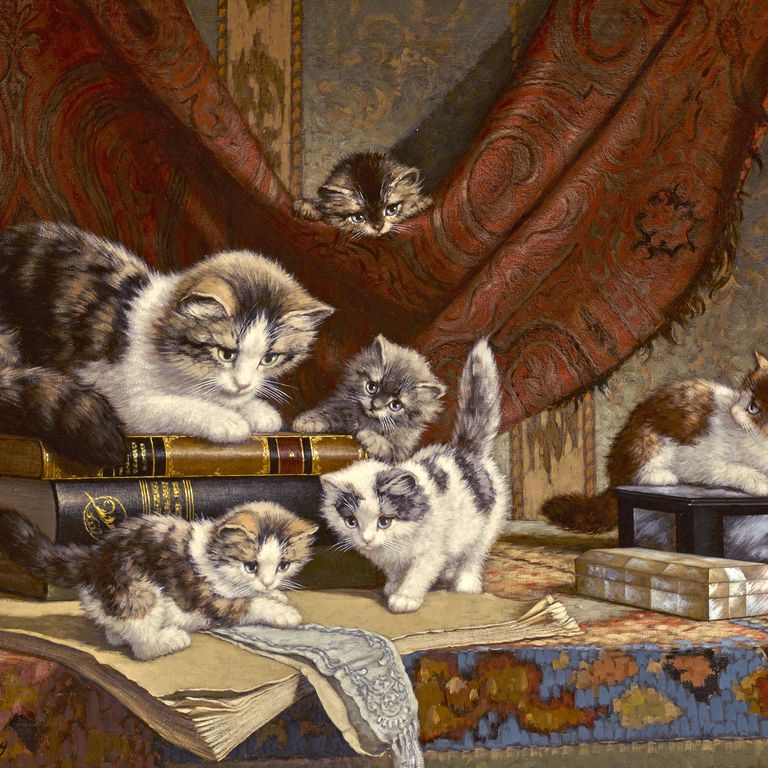Revisiting the 19th CenturyÔÇÖs Cat-Painting Renaissance (Price: $15,000 ÔÇö LOL!)
A clutch of canvases on display at Bonhams auction house in advance of its May 6 sale of 19th-century European paintings should look very familiar to viewers today. The works feature languid felines and frolicking kittens engaged in activities like playing with string, crowding on top of desks, and reclining on pillows. Add LOLCat captions or an Instagram ÔÇ£LikeÔÇØ button, and the paintings would be right at home on computer screens.
ÔÇ£Painting was to 19th-century people what the internet is to us today,ÔÇØ says Madalina Lazen, a senior specialist in 19th-century paintings at Bonhams. In an age before mass media, works of art were a way to disseminate information and imagery from places that werenÔÇÖt otherwise accessible. ÔÇ£Painters who traveled would bring back paintings of what they had seen,ÔÇØ Lazen explains. And as with the current internet, the painting version of it was known for its cat pictures, which were cheap, entertaining, and totally ubiquitous.
In fact, the second half of the 19th century begat a cat-painting renaissance. ÔÇ£It was a trend that snowballed,ÔÇØ Lazen says. Bourgeois collectors, interested in enhancing plush domestic interiors, bought the cat canvases. It became a good market for artists, some of whom became well known in the genre. Two underappreciated stars of the medium are featured in the sale.
The first is Henriette Ronner-Knip, whom Lazen describes as ÔÇ£the consummate cat painter.ÔÇØ Born in Amsterdam in 1821, Ronner-Knip began studying under her father, the topographical painter Joseph August Knip, at the age of 11. She sold her first painting at 15 and held a debut exhibition at 16. Ronner-KnipÔÇÖs signature is her bravura brushwork, presaging Impressionism. On the Watch, one of a pair of Ronner-KnipÔÇÖs paintings at Bonhams, depicts two cats resting together on a pink blanket. The painting dissolves into near abstraction as the animalsÔÇÖ fluffy fur meets the soft pastel background. ItÔÇÖs the Philip Guston of kitten canvases.
Ronner-Knip wasnÔÇÖt always so devoted to cats, however. She originally focused on dogs, a subject she deserted around 1870 ÔÇ£in part at least, to the want of grace in the Belgian dog,ÔÇØ according to an 1891 article in The Spectator. ÔÇ£Enthusiasts for the cat, and there are such, will say that nothing can be too beautiful or too full of expression for the animal.ÔÇØ The statement would find little disagreement today.
The artist ÔÇ£didnÔÇÖt start painting cats until the last two decades of her life,ÔÇØ Lazen says. ÔÇ£She was elderly. Probably because of mobility issues she was forced to stay home a lot, and cats make great motifs.┬áThe cats posed for her. Professional cat painters would own a bunch of cats to have a variety of models.ÔÇØ Thus, the feline portraits were painted from life. Ronner-Knip even built a glass-fronted studio, the better to observe her cats at play in their natural habitat.
These days, Ronner-KnipÔÇÖs canvases can fetch up to $200,000 (the Bonhams works are estimated from $15,000 to $60,000). Cornelis Raaphorst, another Dutch painter two generations younger than Ronner-Knip, followed in her footsteps but failed to break out in the same way. ÔÇ£Cornelis just started out with cats and died with cats,ÔÇØ Lazen says. ÔÇ£He never really made it big like Henriette. He didnÔÇÖt have that ease with the paintbrush as she did, but he did have a following.ÔÇØ
RaaphorstÔÇÖs work is correspondingly priced lower, at $6,000 to $8,000. A Watchful Mother┬áranges further into Hallmark-worthy kitsch, with a matronly cat looking on anxiously as her kittens frolic, though their paws never quite seem to meet the surfaces they perch on. Every animal in the litter has the same glistening blue spherical eyes, like a race of miniature aliens dropped down on Earth for the sole purpose of looking extremely cute.
A third feline entrant in the sale is a departure for the artist. English painter Arthur Wardle was better known for his images of wild beasts ÔÇö lions, tigers, polar bears, oh my ÔÇö which he saw at the London Zoo. ÔÇ£During his lifetime, he painted almost every single mammal known to humankind during that time,ÔÇØ Lazen says. His Bonhams painting The Green Pillow is tamer, depicting three cats entangled in a web of string, clearly exhausted from their mischief. The work is appealing not only in its subject but in its execution, the heavily textured felines contrasting against a diaphanous orientalist silk pillow and fan.
Wardle, too, made much of his living painting dogs, which have proved more popular in the market. But in the Grumpy Cat era, the polarity might shift. ÔÇ£The U.S. has a love affair with dog paintings and dogs in general,ÔÇØ Lazen says. ÔÇ£We canÔÇÖt compete with our cats, obviously, but IÔÇÖm hoping that cats are having a comeback. IÔÇÖm pushing them to take over the dog market.ÔÇØ
Still, some people are allergic to their charms. And cats remain less domesticated than dogs all the way down to their genetic makeup, and our relationship with them is correspondingly more fraught. ÔÇ£People react to cats in very strange ways; they either love them or hate them. I love them,ÔÇØ Lazen says. Does the curator have cats of her own, then? ÔÇ£No, I used to,ÔÇØ she responds with audible sadness. ÔÇ£ItÔÇÖs difficult to take care of cats because I travel too much.ÔÇØ Perhaps a $15,000 kitty painting is a fitting substitute.
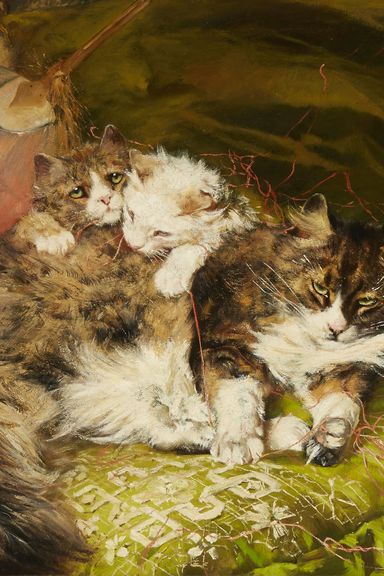
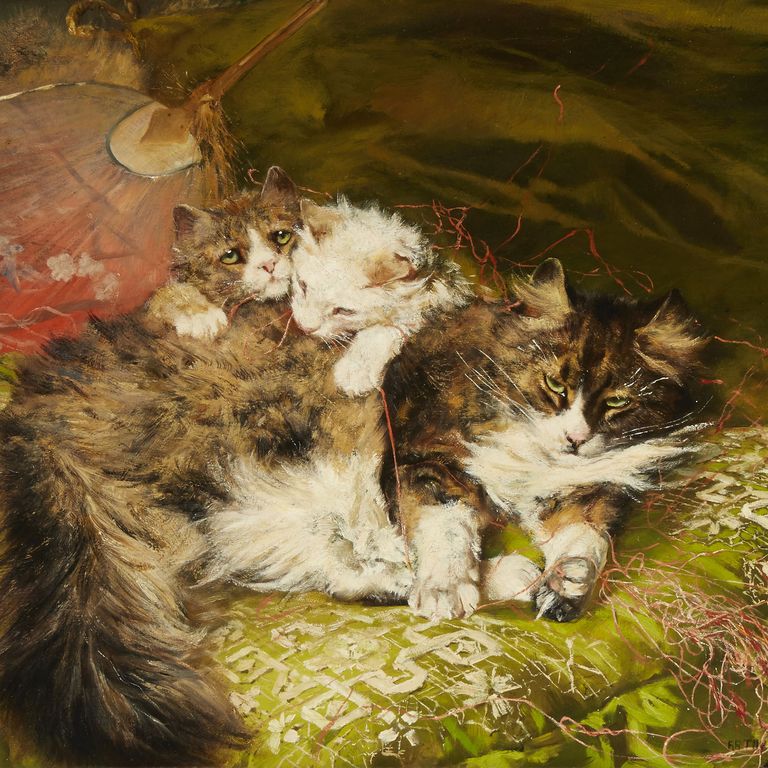
Arthur Wardle
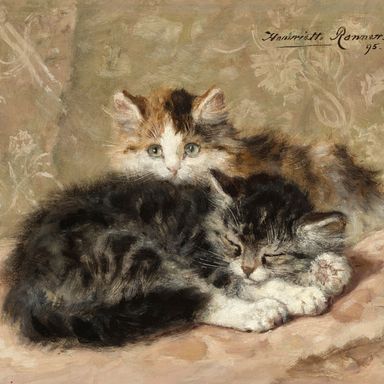
Henriette Ronner-Knip
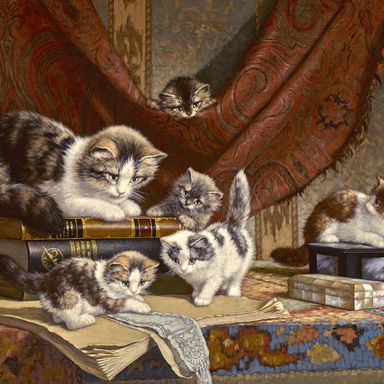
Cornelis Raaphorst
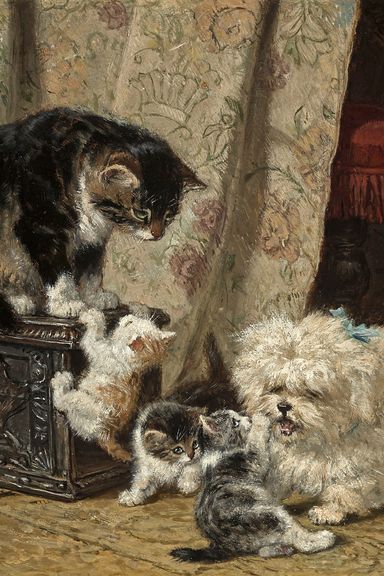
Henriette Ronner-Knip
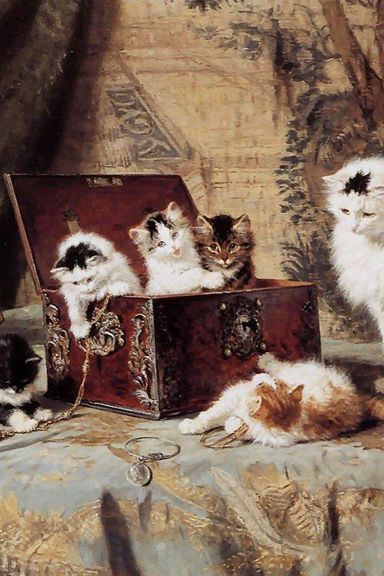
Henriette Ronner-Knip
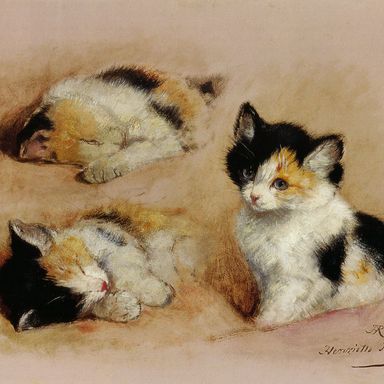
Henriette Ronner-Knip
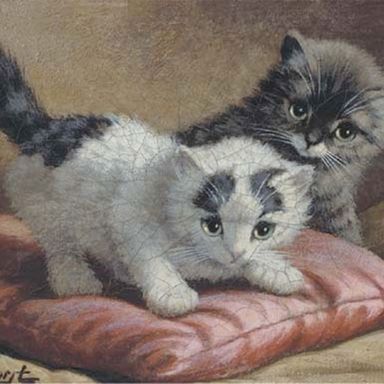
Cornelis Raaphorst
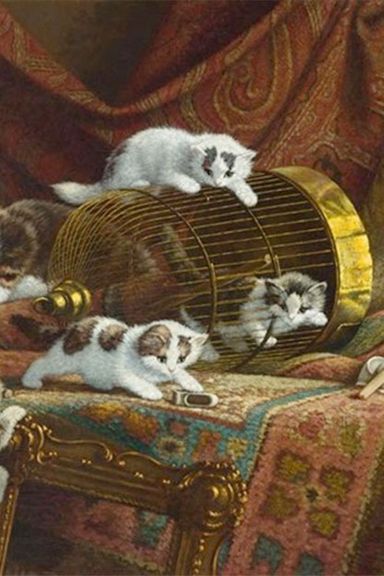
Cornelis Raaphorst

